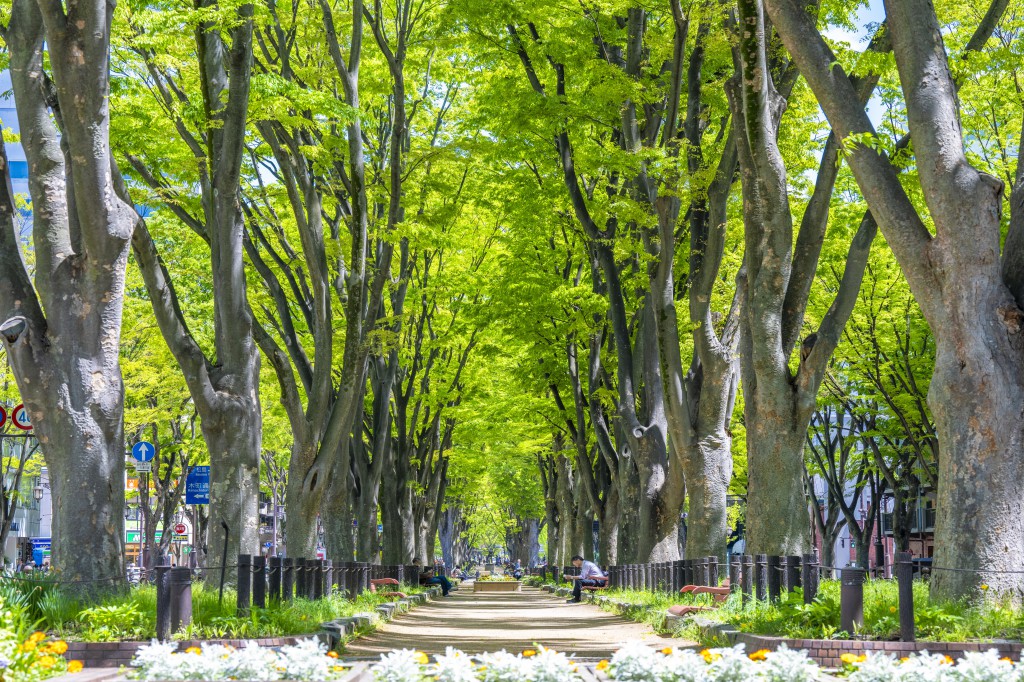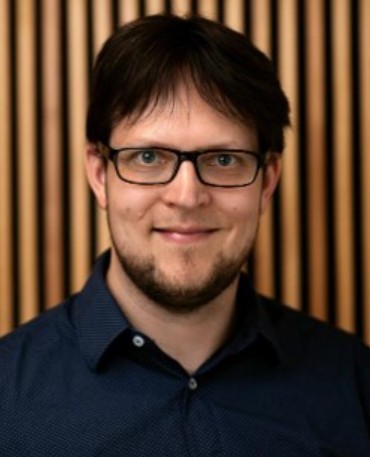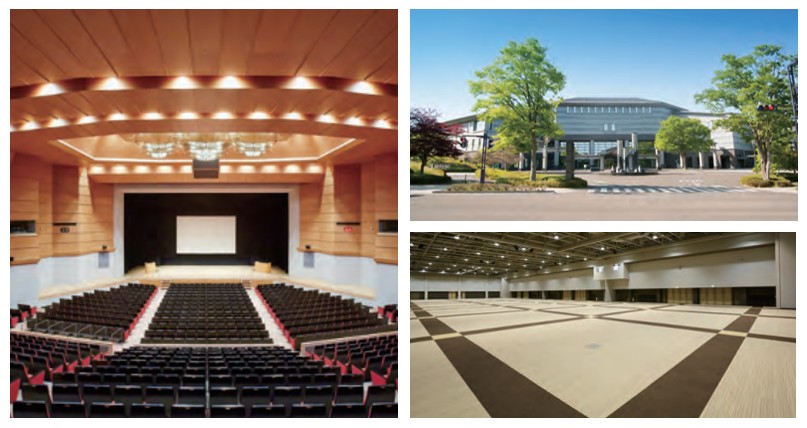Wood is an essential part of Japan’s culture and daily life, woven into the fabric of its history and traditions. From the ancient temples and pagodas to the ubiquitous chopsticks and origami cranes, wood plays a central role in Japan’s cultural identity. Japan is also the birthplace of “forest bathing,” a wellness practice that connects individuals with the natural environment, emphasizing the healing power of forests. In a country so intimately linked to wood, there is no better place than Sendai—famously known as the “City of Trees”—to host a conference dedicated to the study and advancement of wood science.

“City of Trees” Sendai’s symbolic street: Jozenji-dori Avenue. ISWST 2025 participants saw the trees,
but unfortunately the greenery wouldn’t come for a few weeks later in spring.
The International Symposium on Wood Science and Technology (ISWST 2025), held from March 17-19, 2025, at the Sendai International Center, brought together scientists and experts from around the world to explore the future of wood science, its role in sustainability, and its potential as a key material in the 21st century. The event was organized by the Japan Wood Research Society and also featured the 2025 World Wood Day Symposium and the Seventh IUFRO Forest Products Culture Colloquium. About 500 participants attended, including 100 international attendees.
Among the many distinguished attendees, we had the opportunity to interview Dr. Paavo Penttilä, an Academy Research Fellow at Aalto University, Finland. Dr. Penttilä’s research focuses on the structural characterization of wood and materials. He was one of the specially invited speakers at ISWST 2025. Dr. Penttilä is no stranger to Japan. From 2014-2016 he was Postdoctoral Research Fellow at Kyoto University, Research Institute for Sustainable Humanosphere (RISH). Familiar with Japan, but a first-timer to Sendai, Dr. Penttilä was immediately impressed by Sendai’s deep connection with nature.

Profile of Dr. Paavo Penttilä (courtesy of Dr. Paavo Penttilä/ISWST )
Dr. Penttilä had nothing but praise for Sendai’s accessibility and ease of exploration. “The Shinkansen is incredibly convenient,” he said, noting that Sendai is only 90 minutes from Tokyo by direct bullet train. He continued, “Once you’re in Sendai, everything is very close”. On the sunny days of the conference, he even preferred to walk the 25-minute route to the conference, other times opting for the clean and efficient 5-minute subway ride.
Sendai’s compact layout, combined with its integration with nature, makes it an ideal location for MICE events. As a city known for its urban greenery, Dr. Penttilä also appreciated the balance between a modern infrastructure and the surrounding natural beauty, with tree-lined streets and scenic views everywhere you look.
Though Dr. Penttilä’s schedule was packed with his main focus on the conference, he thoroughly enjoyed exploring Sendai’s nightlife in the evenings with colleagues. The city’s nightlife is vibrant, with the Kokubuncho entertainment district offering over 2,500 bars, restaurants, and entertainment facilities. Additionally, several side streets and alleyways are brimming with local flavors and unique character, and the extensive shopping arcades or the area around Sendai Station are dotted with numerous restaurants. Among the many delightful foods, Dr. Penttilä particularly enjoyed the seafood. “Sendai is located next to the sea, so the seafood was very fresh and high quality,” he said. He also indulged in Sendai’s most famous dish, “gyutan.” Typically grilled and served in thin slices, there are over 100 dedicated restaurants offering a wide variety of preparations. He remarked, “It’s fascinating to see how many different ways this dish is prepared and served,” with options like gyutan gyoza dumplings, curry, stew, and steak.
“Gyutan” (grilled beef tongue) is Sendai’s most famous dish.
The nightlife in Sendai is varied and easy to access, with most people walking to and from their hotels.
Pictured on the left is “Kokubuncho” district, on the right is “Iroha Yokocho” alley.
Dr. Penttilä was also impressed with the conference venue, summarizing that the Sendai International Center is suitable for international conferences. The center offers a 3000m2 exhibition space, 1,000-person large hall, and over a dozen breakout session rooms with capacity ranging from 50 to a few hundred, allowing some flexibility for different types of sessions and presentations. Located at the foot of Sendai Castle ruins and adjacent to the Hirose River, the venue provided a beautiful setting for the event. Dr. Penttilä found that the surrounding mountains and natural beauty of the area reminded him of past trips to Nagano, Japan, where lush greenery and distant snow-capped peaks offered a similar atmosphere of peace and serenity.
Across from the Sendai International Center is the Ryokusaikan Visitor Center, a wooden building that embodies the city’s commitment to sustainability and its deep connection to nature. The center features a variety of amenities, including a restaurant, Japanese tearoom, gift shop, and a large multipurpose hall for events and gatherings. ISWST held a welcome reception here in the large exchange hall, which can accommodate 100-150 people depending on function. Two days later, the convention organizers set-up a unique networking and audio-visual experience inside the Japanese tearoom, which features soft tatami mat floors and an outside view of a calming artificial pond.

Sendai’s premier convention center, the “Sendai International Center”, is located just 5 minutes from JR Sendai Station via subway.
The Sendai Convention Bureau played a pivotal role in ensuring the success of ISWST 2025. The Bureau supported the conference with a financial subsidy, bilingual convention volunteers, and an on-site tourism information desk for participants. While the conference did not include set excursions, the Bureau’s volunteers were on hand to provide suggestions for local attractions, including Matsushima Bay, one of Japan’s Three Most Scenic Views, or locations associated with city founder Date Masamune and the Date clan: Zuihoden Mausoleum, the Site of Sendai Castle, and Osaki Hachimangu Shrine.
The conference encouraged members to bring their families, by setting up onsite daycare services provided by an organization introduced by our bureau. We hope that both participants and their families have created many positive memories of Sendai.
A statue of Date Masamune on horseback, adorns the top of the Sendai Castle Site.
The Sendai Convention Bureau regularly gathers feedback from MICE organizers and participants through interviews and surveys. While Dr. Penttilä didn’t mention any major issues during his time in Sendai, he did want to remind organizers to plan their catering needs in advance. There are few restaurants or convenience stores around Sendai International Center, catering and coffee breaks are essential. The “bento” lunch boxes were a big hit with participants not only for their tasty and varied contents but also because they are easy to distribute and clean up during the conference, Dr. Penttilä commented. The Sendai Convention Bureau can connect organizers with local caterers or bento lunch providers, including those able to accommodate special requests such as local foods, vegetarian, or halal options.
As ISWST 2025 came to a close, participants left with a deeper understanding of the scientific advancements in wood technology and confirmed the potential of wood as a sustainable and versatile material. Dr. Penttilä and his colleagues departed not only with new scientific insights but also with fond memories of Sendai’s hospitality and natural beauty.
We would like to extend our heartfelt thanks to Dr. Paavo Penttilä for sharing his reflections, and recognize the support of Kiyohiko Igarashi, Professor at The University of Tokyo, Graduate School of Agricultural, and Life Sciences, and Executive Committee Chairman of ISWST for making the introduction to Dr. Penttilä and other support. And of course, thank you to the Japan Wood Research Society for hosting this remarkable symposium in Sendai. “Arigato” from the Sendai Convention Bureau team!
Executive Committee Chairman Kiyohiko Igarashi (left) and Invited Speaker Dr. Paavo Penttilä pose in front of the conference wooden welcome board.
~~~~~~~~~~~~~~~~~~~~~~~~~~~~~~~~~~~~~~~~~~~~~~~~~~~~~~~~~~~~~~~~~~~~~~~~~~~~~~~~~~~~~~~~~~~~~~~~~~~~~~~~~~~~~~~~~~
Are you a MICE organizer considering hosting your event in Japan? Let’s discuss what Sendai has to offer! Contact us for free consultation and discover Sendai’s appealing event environment and the extensive range of support services we provide:
<Sendai Convention Bureau Inquiry Form>
 topへ
topへ